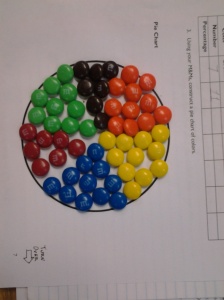I teach in an urban district, in a poor neighborhood where >90% of our students are on free or reduced lunch. The schools in our neighborhood have been making strides, but have regularly been on the state’s naughty list with regards to success. There are already enough discussions of why it got this way and how to fix it and who to blame on the internet, and I don’t have the time to waste on that anyway. I choose to focus on my classroom, and what I can do (or can’t do).
I’ve spent a good deal of time in the last couple months reading and taking ideas from some prominent math teacher bloggers from around the country who are true innovators in terms of content and rigor of their courses. One of the biggest revelations of getting caught up in math teacher blogging world is realizing how limited most of my students truly are. I know its oversimplifying it to say it this way, but most of my students are functionally illiterate! They could read through a passage and say most of the words correctly, but if there is a new word (particularly a math term) they struggle to sound it out. Then if I ask another student to rephrase or summarize, I first get word for word quotes. If I keep pushing, maybe that one particular kid can save everyone else from their dumbfounded silence.
They didn’t teach me this in my undergrad, but illiteracy is equally as disabling in math as it is in English, history, or any other course that typically carry the torch for reading and discussion.
When students choose not to read because they don’t understand it anyway, they become primarily auditory and visual learners. They want to hear everything or see pictures. I don’t mind catering to those needs and am doing my best. However, it leaves me as the only spring of knowledge in the room.
I have tried to adapt group work packets from some of my favorite math bloggers like this one (which I stole almost completely from Kate Nowak), only to have my classroom devolve into social hour because the students are busy waiting for me to come around and explain the questions to them and walk them through step by step, even when I have written out hints beside the questions. Many never learned to struggle through a problem and evaluate their answers based on other resources.I think this is one of the things that makes teaching so exhausting for me. I have to do everything for many of the students.
Part of this is venting, but also a call for ideas. How would you react in this situation? I know there is no magic bullet, but I want my students to realize the value of becoming more self-directed and responsible learners. How would you communicate that?



